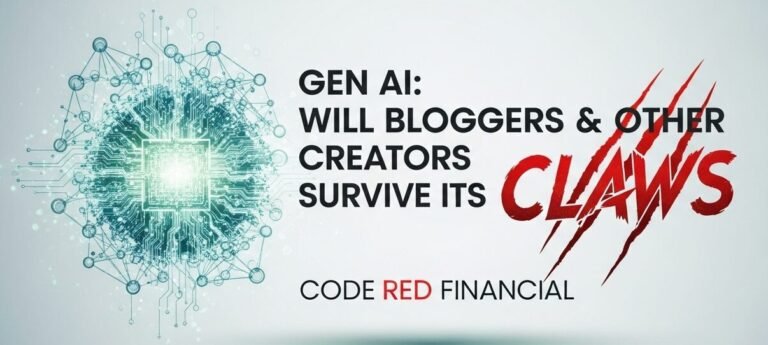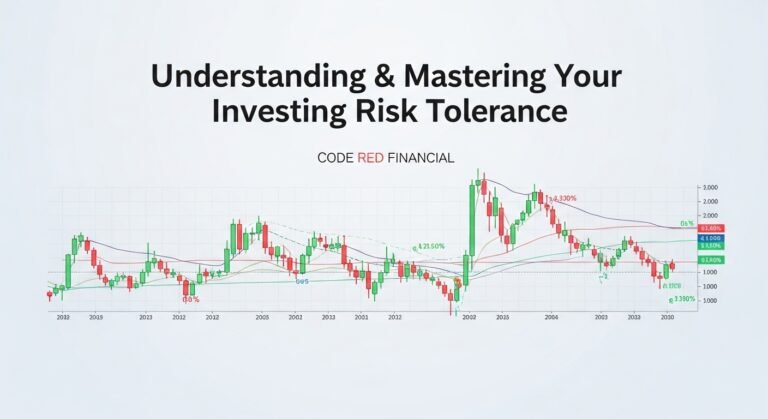
Why It’s Time to Rethink Our Relationship with Stuff
I’ll admit it: I’m a bit of a financial scrooge. Some might even call me a miser, the “emperor of frugality.” So, when I sit down to write about this topic, you might wonder why I’m talking about it in the first place. Shouldn’t we be happy to enjoy the money we earn?
The answer is both yes and no. Lately, I’ve been fascinated by the almost automatic way many people get rid of money. It’s as if their wallets have an adversarial relationship with their hard-earned cash. This isn’t just about spending; it’s about a culture of acquisition—a powerful force that shapes our lives and our financial futures.
This modern ideology encourages us to acquire goods and services in ever-greater amounts. It’s a subtle but powerful shift from buying what we need to chasing what we want. This is driven by marketing that links our personal identity and social status to what we own. Over the decades, this culture has evolved significantly, adapting to changes in society, technology, and the economy.
Historically, our ancestors bought what they needed to survive. But by the mid-20th century, particularly in post-World War II America, society transitioned toward a model that prioritized desires over needs. Mass production and clever advertising began to sell not just products, but lifestyles. Luxury and convenience became the new yardsticks for success, and our focus transitioned from necessity to desire. As this culture of buying burgeoned, it created the idea that happiness and fulfillment were accessible through material goods.
Today, this culture has been supercharged by credit and online shopping, creating a world where impulse buys are just a click away. Access to a plethora of goods at our fingertips has made impulsive buying proliferate. This system of constant acquisition, once a historical necessity, has evolved into a complex web of psychological, social, and economic implications that shape our daily lives.
The Psychological Price of Chasing More
The constant cycle of buying has a profound psychological impact, shaping our self-perception and emotional well-being. The constant barrage of advertisements and societal expectations leads many of us to equate our self-worth with our material possessions. This fosters feelings of inadequacy when we can’t keep up with the latest trends. This cycle of comparison ignites a sense of anxiety; we often feel pressured to attain the latest goods to achieve social acceptance and validation.
The notion of instant gratification plays a significant role in our behavior. The immediate pleasure derived from a new purchase is often fleeting, leading to a continuous loop where we constantly seek the next thing, hoping it will provide lasting satisfaction. Over time, this behavior can contribute to deeper emotional issues, such as depression, as the temporary highs of buying new items do not provide lasting happiness. Instead, the subsequent return to everyday life may result in feelings of emptiness and regret, further exacerbating mental health challenges.
Marketing strategies are intricately designed to exploit human psychology, often manipulating our self-esteem and promoting a distorted sense of fulfillment through consumption. Advertisements create idealized images of life, suggesting that happiness and success are attainable through the purchase of products. Consequently, we may internalize these messages, leading us to feel inadequate or unworthy if we are unable to attain similar lifestyles. This impact is magnified by social media platforms, where curated lives often showcase material success, perpetuating the emotional burdens of relentless acquisition.
In essence, the psychological ramifications of this culture of more encompass a range of adverse effects on mental health, revealing a compelling need to address these issues. By understanding the roots of these feelings and the influences that drive our behavior, we can begin to shift our perspectives on acquisition, moving towards a more sustainable and fulfilling approach to life.

The Environmental Toll of Overconsumption
The endless cycle of buying has a real impact on our planet. One of the most urgent issues is the sheer volume of waste. The World Bank predicts that global waste will increase by 70% by 2050 if we don’t change our ways. This waste, much of which is non-biodegradable, pollutes our landfills and oceans, harming wildlife and entire ecosystems. This accumulation of waste creates a ripple effect, influencing not just local environments but also global habitats.
The production of goods also devours natural resources. Industries continuously extract raw materials, including minerals, timber, and fossil fuels, which leads to habitat destruction, soil degradation, and water scarcity. For instance, the fashion industry is notorious for its unsustainable practices; it requires large quantities of water and contributes to deforestation, while also generating substantial waste through fast-fashion cycles. This relentless model of production exacerbates the strain on our planet’s resources, compromising the ability for future generations to meet their own needs.
Our collective choices also contribute to climate change. According to the Intergovernmental Panel on Climate Change (IPCC), the global supply chain accounts for approximately 80% of the world’s greenhouse gas emissions. As more goods are produced and transported across greater distances, the carbon footprint expands, fueling the climate crisis. It becomes increasingly clear that our collective choices as shoppers play a pivotal role in influencing these environmental challenges.
As awareness around these issues grows, it becomes imperative for individuals and companies alike to adopt sustainable practices to mitigate the ecological impact of this buying culture. Urgent action is needed to reduce waste, conserve resources, and lower emissions, paving the way for a more sustainable future.
The Economic Ripple Effect
The economic consequences of rampant purchasing extend far beyond our individual bank accounts. At its core, this drive for material wealth and excessive consumption often results in significant inequality within society. As the affluent accumulate more resources, those who are economically disadvantaged are often left behind, perpetuating a cycle that deepens socio-economic divides. This phenomenon is further exacerbated by a debt-driven culture, where individuals are compelled to borrow excessive amounts to maintain a lifestyle dictated by the values of a throw-away society.
Additionally, the expectation of continuous growth inherent in a purchase-driven economy is inherently unsustainable. The relentless pursuit of higher profits and increased consumption leads to the depletion of natural resources and contributes to environmental degradation. This cycle creates a precarious economic landscape, where short-term gains are prioritized over long-term stability, resulting in increased volatility and potential crises. Such instability can be seen in economic downturns, where overreliance on consumer spending can lead to severe repercussions, affecting entire markets and communities.
As society grapples with these challenges, alternatives to traditional purchasing habits are gaining traction. Movements like minimalism advocate for reducing consumption and prioritizing personal fulfillment over material possessions. By embracing a simpler lifestyle, we can mitigate the psychological pressures that fuel this cycle while also reducing our ecological footprint. Furthermore, circular economics offers a framework that encourages the recycling and repurposing of resources, fostering a more sustainable model of production and consumption. Through these approaches, we can begin to address the economic ramifications of a purchase-driven society and carve a path towards a more equitable and stable economic future.
The Influence of Marketing and Advertising
Marketing and advertising play a pivotal role in shaping our purchasing habits, utilizing a variety of strategies to create a sense of urgency and necessity around products. One prevalent psychological tactic is the “fear of missing out” (FOMO). This approach preys on our insecurities, suggesting that we will lose social status or miss unique experiences if we don’t act quickly to acquire certain goods. By highlighting limited availability or exclusive offers, marketers create an environment where we feel compelled to purchase, often without fully understanding our actual needs.
Furthermore, the creation of perceived needs is a hallmark of modern advertising. Many advertisements depict idealized lifestyles that we are led to believe can only be attained through the acquisition of specific items. This strategy not only fosters a sense of inadequacy among individuals who do not possess these items but also encourages them to continuously seek out new products in the hope of enhancing their own lives. As a result, we find ourselves in a perpetual cycle of acquisition, where the latest trends dictate our behavior, and satisfaction remains elusive.
Social media compounds these influences, serving as a modern platform for marketers to amplify their reach. Influencers, brand collaborations, and curated content all contribute to a culture that values instant gratification and accumulation. Social media’s visual nature further emphasizes the desirability of products, often blurring the lines between wants and needs. This differentiation is crucial, as we are frequently unaware of how much we are being influenced to purchase based on trends rather than genuine necessity.
As these tactics evolve, it becomes increasingly important for us to recognize the strategies at play in marketing and advertising. Understanding the psychological manipulation behind product promotion can empower us to make informed choices and lessen the grip of this culture of acquisition on our lives.
Your Guide to Conscious Consumption
This culture of “more,” while often celebrated in society, can lead to significant personal and environmental costs. To navigate this landscape mindfully and minimize its adverse effects, we can adopt several practical strategies aimed at fostering conscious habits.
- Set a realistic budget. By tracking income and expenses, you can gain clarity on your financial priorities. This helps you make informed decisions and discourages impulsive purchases.
- Cultivate conscious shopping habits. Before making a purchase, ask yourself: “Do I really need this?” or “Is there a more sustainable option?” Utilizing lists can also reduce the likelihood of unplanned buying, ensuring that purchases align with genuine needs.
- Prioritize experiences over things. Engaging in activities like travel, education, or community service often results in lasting satisfaction that purchases cannot provide. These experiences not only contribute to personal growth but also often foster connections with others, creating a richer life.
- Engage in sustainable practices. Buying second-hand, recycling, or choosing eco-friendly products helps combat the implications of excessive acquisition. By becoming mindful of the environmental impact, you can make choices that support both your values and the planet.
- Declutter your life. This beneficial strategy encourages you to reflect on your possessions and let go of items that no longer serve a purpose. This process not only creates physical space but also contributes to mental clarity, allowing for more intentional choices.
Utilizing some of these strategies, will certainly assist in preparing you to resist the pressures of the spend first ask question later culture and might even contribute to a healthier bank account and perhaps a better life. What will your first step be?
Disclaimer: This article is for informational purposes only and should not be considered financial or investment advice. Investing in any of the mentioned passive income streams involves risk, and you could lose money. Before making any investment decisions, it is essential to conduct your own thorough research and consider consulting with a qualified financial advisor who can assess your individual financial situation, risk tolerance, and goals. The potential returns discussed are illustrative and not guaranteed. Market conditions, regulations, and other factors can significantly impact the performance of any investment or business venture.







